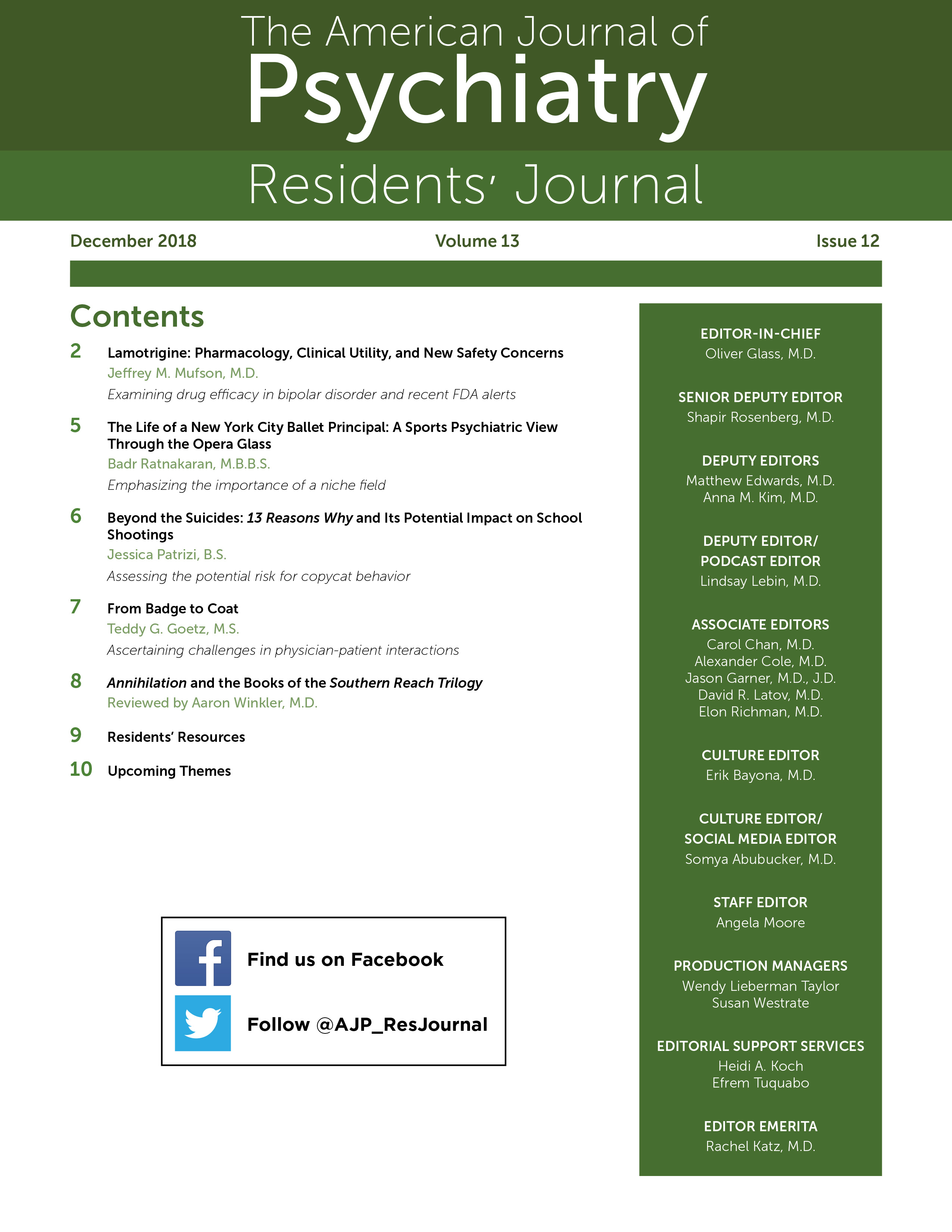After season two of the Netflix series
13 Reasons Why was released, I watched all 13 episodes before the night ended because I needed to know what would happen next. Similar to many viewers across the nation, I too found the series to be very relatable and at times representative of my own experience in high school. In the series, the main character, Hannah Baker, releases 13 cassette tape recordings, each directed toward classmates she faults for her imminent suicide. The episodes that follow divulge on the aftermath of her actions, exploring topics such as substance abuse, bullying, and even rape. Many viewers reported that the show helped them to better understand and process difficult topics (
1), but critics have expressed concerns of the increased risk of copycat behavior that can occur after glamorized depictions of suicide, known as the Werther effect (
2). Accordingly, most of the literature surrounding the series focuses on suicide and suicide prevention. However, another serious topic introduced in season two is that of school shootings.
After millions watched Hannah Baker die by suicide in season one, a study conducted by Ayers et al. (
3) demonstrated robust data supporting the Werther effect. According to the study, a larger than expected surge of up to 1.5 million web-based searches for suicide was reported. Although nearly half of viewers reported seeking more information on difficult topics (
1), there was an increase in searches such as "how to commit suicide" and "how to kill yourself," which is concerning for future risk.
Equally as concerning is the potential risk for copycat school shootings in the aftermath of the season two finale. The character Tyler Down attempts to shoot his classmates at the school dance as a result of the cumulative effect of being bullied, assaulted, and raped. Ten school shootings were identified following the release of season two, compared with six shootings reported during the same period in the previous year (
4).
To address these concerns, experts from the mental health community have proposed several preventive measures and support for viewers. Such measures include recommending that individuals who are at high risk avoid watching the series and encouraging viewers to utilize the 13 Reasons Why Toolkit (
5). Providing hotline numbers during future episodes could potentially support viewers with risk factors (
1). In addition, school safety policies and crisis plans should be carefully reviewed to ensure readiness for crises, which would include both suicide and mass shootings.
13 Reasons Why has promoted discussion of difficult topics but not without consequence. Hopefully, these discussions will encourage more research, resources, support, and safety policies.
